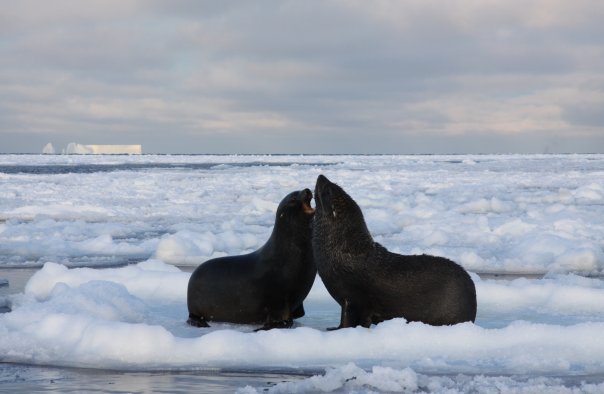Photo by Karl Herman-Kock
CELEBRATION OF THE 40TH ANNIVERSARY of CCAMLR
In the lead up to celebrations of the 40th anniversary of the Convention on the Conservation of Antarctic Marine Living Resources (CAMLR Convention), which entered into force on 7 April 1982, and the CAMLR Commission (CCAMLR), which is holding its 40th meeting in October 2021, the CCAMLR Secretariat is releasing a series of blogs that explore the development of this organisation and its success in conserving the unique and remote Antarctic marine ecosystem.
When the Antarctic Treaty was signed in 1959, it was anticipated that a number of other organisational structures would be required to complete what has since become known as the Antarctic Treaty System. This now comprises the Convention for the Conservation of Antarctic Seals (CCAS, London, 1972), the Protocol on Environmental Protection to the Antarctic Treaty (Madrid, 1991) and the Convention on the Conservation of Antarctic Marine Living Resources (CAMLR Convention, Canberra, 1980).

The marine life of the Southern Ocean has been harvested since 1790 when sealers first hunted fur seals for their pelts. Large-scale fishing for finfish started in the late 1960s, and krill fishing started in the mid-1970s. By 1980 more than 400 000 tonnes of krill were being taken annually. Krill is a keystone species in the Antarctic ecosystem, as seabirds, seals and whales depend on it for food.
In 1977, the Scientific Committee on Antarctic Research, created in 1958 as a thematic organisation of the International Science Council (ISC), initiated an extensive program on Antarctic research called the Biological Investigation of Marine Antarctic Systems and Stocks (BIOMASS). The research compiled during this program went on to create a firm scientific basis for CCAMLR’s work.
At the same time, the Antarctic Treaty Consultative Parties, concerned over the increase in krill fishing activities in the Antarctic and their effect on the ecosystem, which was heavily dependent upon krill, initiated negotiations on drafting a definitive regime for the conservation of Antarctic marine living resources. Following a number of meetings, the final text of the CAMLR Convention was adopted at the Conference on the Conservation of Antarctic Marine Living Resources, held in Canberra, in May 1980. The CAMLR Convention was opened for signature on 1 August 1980. The CAMLR Convention came into force on 7 April 1982, almost 40 years ago.

Because CCAMLR was developed as part of the Antarctic Treaty system, the Convention emphasises its objective as conservation of Antarctic marine living resources, where conservation includes rational use. It was one of the first agreements covering areas including international waters (high seas) to highlight key concepts such as the ecosystem approach to fishing and the precautionary approach. These are embedded in the Convention as its Article II, which defines that fisheries need to be managed so as to prevent decreases in a fish stock which would impact its ability to reproduce or reduce it below a level which allows its greatest growth rate, to preserve ecological relationships between harvested and dependent and related species, and prevent irreversible changes to the marine ecosystem. The Convention is also highly significant because it covers all Antarctic marine ecosystems, being all the waters south of the Antarctic Convergence, an area that covers about 10% of the global ocean.

Over the last 40 years, CCAMLR has successfully halted the decline in all fish stocks that were being overfished in the 1970s and has maintained all Antarctic fish stocks at a high and sustainable level. It has set management rules (Conservation Measures) that safeguard the impact of fisheries on dependent and related species, whether these are caught as by-catch (animals that are killed by fishing gear but are not the main target of the fishing activity) or whether they depend on one of the fished species for their food. It has also developed a detailed international scientific program and a comprehensive compliance regime to support its work (see later Blogs).
The Commission started work in May 1982, just one month after the Convention came into force and set up its headquarters in the picturesque town of Hobart in Tasmania, Australia. The Commission has had three headquarters buildings in its 40 years in Hobart. The first was in the converted IXL jam factory warehouses on Hunter Street, in Hobart’s harbour. The current headquarters building on Macquarie Street was built in 1849 as the first purpose-built school in Hobart, Hutchins School, on the site of the Government gardens that were originally created to serve the first Hobart Government House.

The Convention has 36 Contracting Parties and 26 of these are Members of the Commission. Under the Convention, the Contracting Parties established the Scientific Committee as a consultative body to the Commission. The Scientific Committee has a number of subsidiary bodies, working to provide scientific advice on ecosystem monitoring and management; fish stock assessment; statistics, assessments and modelling; and acoustics, survey and analysis methods. The Commission is also advised by two Standing Committees, one on Implementation and Compliance and one on Administration and Finance. It has cooperative arrangements with a number of non-contracting parties and intergovernmental and non-governmental organisations.
The Commission and Scientific Committee are supported by a 26 person Secretariat based in its headquarters building which is augmented with interpreters, translators and support staff during meetings of the Commission and the Scientific Committee each October. The official languages of the Commission and the Scientific Committee are English, French, Russian and Spanish.

Please see our brochure for more information.